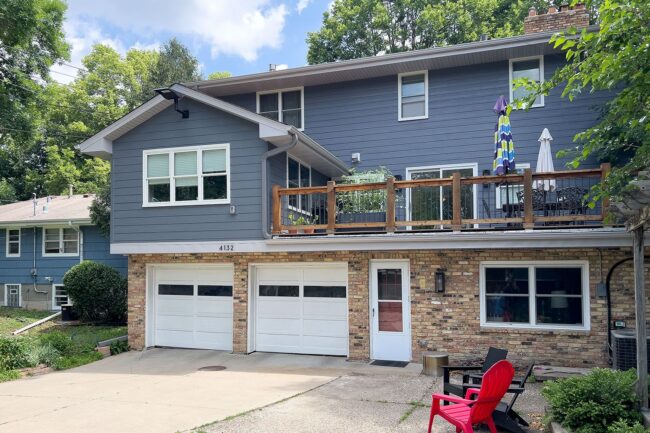Vintage Revival: Blending Old-World Charm with Modern Convenience in Your Home

A contemporary sideboard with vintage design influences, exemplifying blending old-world charm with modern convenience
Creating a home that marries the elegance of yesteryear with today’s conveniences is a sought-after design approach. Blending old-world charm with modern convenience is not just about aesthetics; it’s about functionality, too. This concept shines brightest in whole house renovations, where every detail contributes to a cohesive look. Integrating vintage aesthetics with contemporary amenities offers the best of both worlds. It allows for a living space that celebrates historical beauty while catering to present-day needs. Such an approach guarantees your home is visually appealing and thoroughly practical.
The Allure of Vintage Aesthetics
Vintage aesthetics bring a unique charm to home decor, captivating with their timeless beauty. These elements, ranging from antique furniture to classic art, inject personality and history into living spaces. The appeal lies in their ability to evoke nostalgia, creating a warm and inviting atmosphere. When incorporating old-world elements like ornate mirrors, hardwood floors, and traditional textiles, homeowners can enhance their home’s aesthetics, making each corner a reflection of a bygone era.
Modern Convenience
In our quest for style, modern convenience remains a necessity. Today’s homes require amenities that add both comfort and efficiency. From smart thermostats to energy-efficient lighting, these technologies simplify daily routines. For example, green remodeling emphasizes the importance of integrating eco-friendly solutions without compromising on convenience. This approach ensures homes are stylish but also sustainable and functional, catering to the needs of contemporary living.
The Challenges of Blending Old-World Charm with Modern Convenience
Blending old-world charm with modern convenience presents a creative challenge. The key is balance. Start by selecting statement vintage pieces and complementing them with modern accents. For instance, a classic wooden table can pair beautifully with sleek, contemporary chairs. Use color and texture to unify the space, allowing both old and new elements to coexist harmoniously. This strategy ensures your decor reflects a cohesive blend of eras, enhancing the overall appeal of your home.
Key Areas for Vintage Revival
Living Room Luxuries
The living room offers a perfect canvas for vintage revival. Incorporate vintage sofas and classic artworks to add a touch of elegance. Ornate decorations can coexist with smart home gadgets, creating a beautiful and practical space. Consider blending vintage trunks as coffee tables or bookcases with modern lighting solutions. This approach allows you to enjoy the luxury of vintage aesthetics without sacrificing the conveniences of modern technology.
Kitchen and Dining: A Blend of Eras
The kitchen and dining area are ideal for showcasing a blend of eras. Antique kitchenware and furniture can merge seamlessly with modern appliances, offering style and functionality. Opt for a classic farmhouse sink paired with a high-tech faucet, or display vintage china in glass-front cabinets above sleek countertops. This blend enhances the kitchen’s aesthetic appeal and ensures it meets the demands of today’s culinary adventures.
Bedroom Elegance with Modern Comfort
The elegance of antique bed frames and vintage linens in the bedroom can harmonize with contemporary lighting and comfort technologies. Choose an antique wooden bed as the focal point and complement it with modern bedside lamps equipped with smart bulbs. Incorporate vintage dressers or wardrobes, but ensure your mattress and pillows provide the latest in sleep comfort technology. This combination allows you to enjoy the visual appeal of vintage decor while benefiting from modern advancements in comfort and convenience.
Spotlight on Furniture
Carefully selected furniture is fundamental in blending old-world charm with modern convenience. Choosing pieces with character can bridge the gap between eras. Look for vintage furniture that offers both style and functionality. When moving your furniture pieces, whether they’re crafted from leather or upholstery, make sure you do it with the proper technique and utmost care to avoid injury or damage. Position these pieces strategically within your space to create focal points that draw the eye and stimulate conversation while ensuring they complement the modern aspects of your home for a cohesive look.
Incorporating Technology
Modern technology can be integrated into vintage-inspired decor in ways that enhance rather than detract from the overall aesthetic. Opt for tech gadgets that have a retro look or are compact enough to blend into the background. Wireless speakers disguised as vintage books, smart bulbs in antique lamps, or vintage-style refrigerators with modern cooling technology are perfect examples. These elements allow you to enjoy the convenience of the latest technology while maintaining the charm of vintage design.
Achieving Aesthetic Cohesion
Achieving a cohesive look when blending different eras in home decor requires careful consideration of color schemes, materials, and finishes. Stick to a palette that complements your space’s vintage and modern elements. Use materials and finishes that bridge the gap between old and new, such as natural wood with metal accents. Avoid common pitfalls like overcrowding the space with too many styles or colors, which can create a disjointed appearance.
Where to Find Vintage Treasures
Finding authentic vintage items for your home can be an adventure in itself. Explore both online platforms and physical stores that specialize in vintage goods. Online marketplaces, antique shops, and thrift stores are treasure troves for unique finds. When selecting vintage items, research their history and authenticity to ensure you’re bringing home pieces that are not only beautiful but also hold value. This guide to sourcing vintage treasures will help you curate a collection that reflects your style.
DIY Projects for Personal Touches
Adding personal touches to your home through DIY projects can infuse your space with vintage charm. Consider repurposing old frames into chalkboards, refinishing a vintage dresser, or crafting vintage-style cushions. These projects add unique elements to your décor and allow for a personalized expression of style. Don’t forget that product care and maintenance are key to preserving both the appearance and function of your DIY creations, ensuring they last for years to come.
Final Words
Blending old-world charm with modern convenience is essential for creating a living space that is both aesthetically pleasing and functionally efficient. This approach allows homeowners to enjoy the best of both worlds, combining the elegance of the past with the innovations of the present. We encourage you to experiment and find the right balance that suits your style and needs. You can create a home that looks beautiful and enhances your everyday life. Adapt this creative challenge and transform your space into a reflection of timeless beauty and contemporary comfort.





